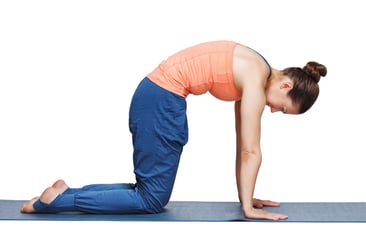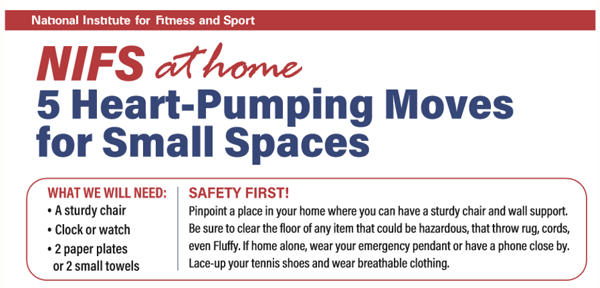 If you have been sitting for a long period of time and your body is starting to ache or feel stiff, try out these seven tips to help you loosen up. Start with number one and move down the list. It will take about 2-8 minutes depending on how long you want to spend on each one.
If you have been sitting for a long period of time and your body is starting to ache or feel stiff, try out these seven tips to help you loosen up. Start with number one and move down the list. It will take about 2-8 minutes depending on how long you want to spend on each one.
1. Breathe. Inhale through your nose slowly, fill your belly with air rather than just your chest, exhale slowly through your mouth by pushing the air out with “O” lips. Do this at least 3 times to relax your body.
2. Relax every muscle. Close your eyes, think about your muscles starting with the face, relax and follow this thought process down to your toes. Relax your forehead, eyebrows, and eyelids. Let your jaw muscles loosen. Release tension in your shoulders. Unclench your hands. Move your ankles and toes around and then relax them. You should now feel little to no tension in most of your body muscles.
3. Roll your shoulders. Slowly roll your shoulders forward in big circles. You should lift them as high as you can and push them down as low as you can to work through the entire range of motion. After at least 3 forward shoulder rolls, switch directions and roll them backward.
4. Reach above your head. Reach as high above your head as you can to elongate your body. Reach slightly behind you as you push your hips forward to get a lower back stretch. Return to center and then, with arms still extended above your head, lean to one side for a good stretch and then to the other side.
5. Reach to your toes. Now, with knees just slightly bent, slowly bend down to your toes. Push your hips back to get a deep hamstring stretch. Don’t let your knees lock into a hyperextended position. Think about elongating your spine; it’s okay to arch your back in this position. Hold this position for at least 15 seconds, then slowly stand back up. Repeat 2-3 times and each time, try to go a little deeper into the stretch.
6. Roll your IT band. If you have a foam roller or a rolling pin, roll your IT band for 15+ seconds on each side. Your IT band is on the outside of your thigh. It gets tight when you sit for long periods of time, and one of the best ways to release that tension is through rolling. If you don’t have a foam roller or a rolling pin, take the palm of your hand and starting at the top near your hip, push in and downward on the muscle slowly. Repeat several times to get that muscle relaxed. It may feel a little uncomfortable but rolling allows the muscle to release tension and inflammation that can be causing discomfort.
7. Massage your back muscles. The muscle that lines your spine is called the erector spinae. It gets tight when we sit for long periods of time. Make a fist and put your thumb knuckle on the muscle. Rub back and forth and in small circles. Make sure to do this on both sides of the spine from your lower back up to your mid back. You should not rub the spinal cord, just the muscle on either side. There are a few different ways to massage the muscle yourself, so just figure out what works best for you. The amount of time you massage the muscles is up to you.
Make it a priority to take breaks often to loosen your body. And when you are sitting, make sure to sit with good posture. Movement, even in small bouts, will help you take care of your body! Join me in a good 16 minute stretch, click here or view below.


 If you have been sitting for a long period of time and your body is starting to ache or feel stiff, try out these seven tips to help you loosen up. Start with number one and move down the list. It will take about 2-8 minutes depending on how long you want to spend on each one.
If you have been sitting for a long period of time and your body is starting to ache or feel stiff, try out these seven tips to help you loosen up. Start with number one and move down the list. It will take about 2-8 minutes depending on how long you want to spend on each one.